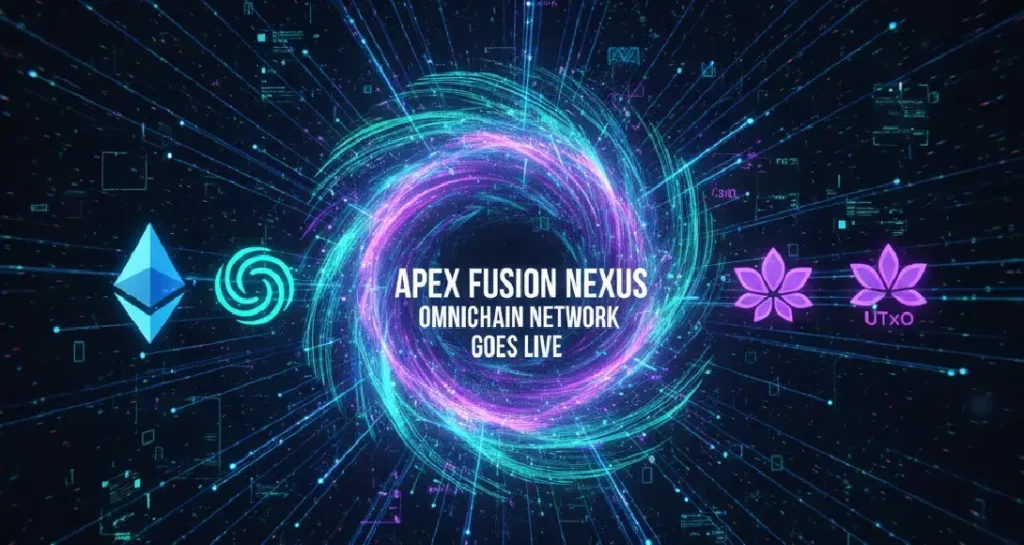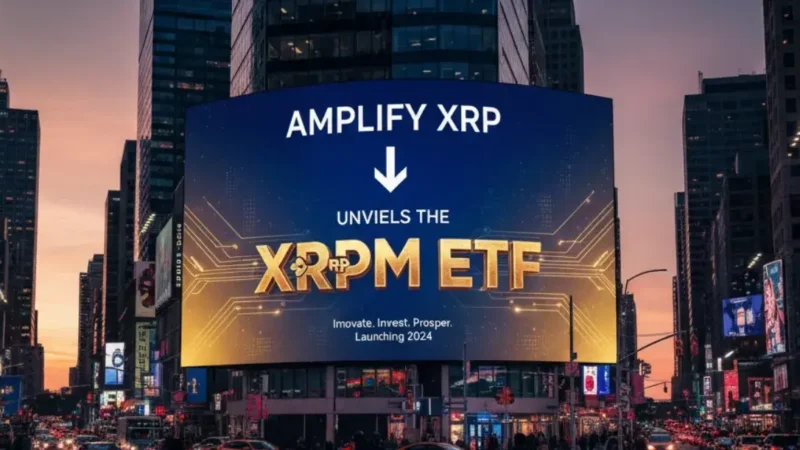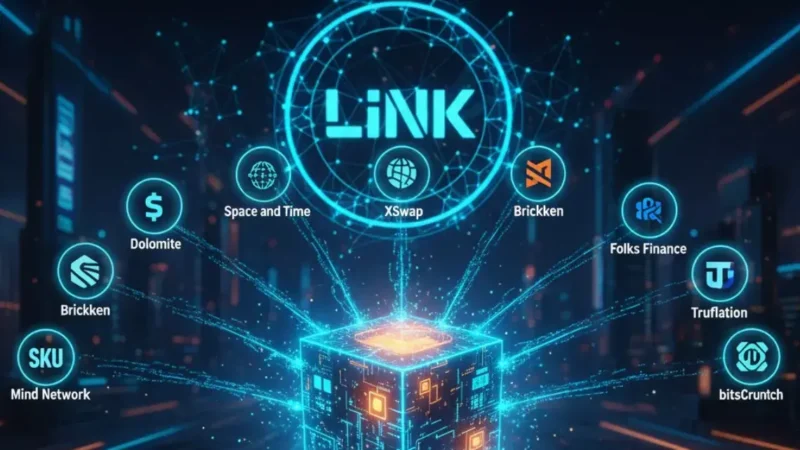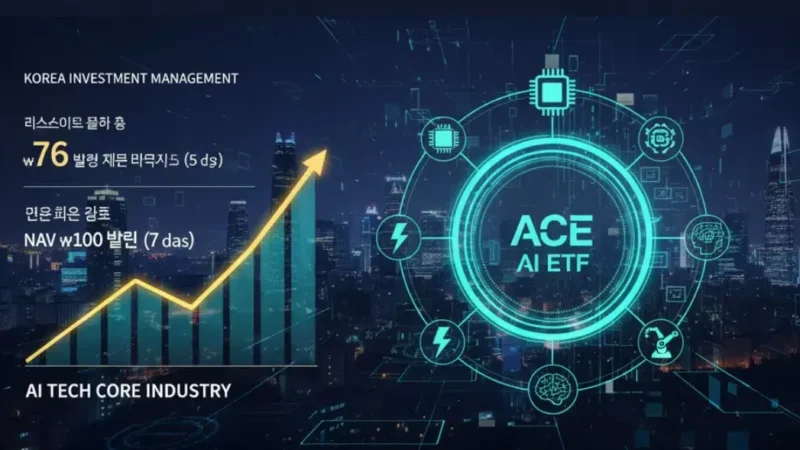Apex Fusion Launches NEXUS Chain on LayerZero: Unlocking the True Omnichain Network

The promise of Web3 has always been a decentralized, borderless economy. Yet, for years, the crypto landscape has remained fractured. Major blockchain ecosystems—Ethereum, Solana, Cardano, and countless others—have operated in isolated silos, each with its own liquidity pool, developer community, and security model. The consequence? Fragmented capital, diminished user experience, and a ceiling on true decentralized application (dApp) growth.
This era of digital fragmentation has officially ended.
Apex Fusion has announced the monumental launch of its NEXUS chain on the robust LayerZero protocol. This integration is not merely a new bridge; it is the establishment of a fully-fledged, live omnichain network that unifies over 145 LayerZero-supported blockchains. By successfully weaving together previously disparate architectures—including the dominant Ethereum Virtual Machine (EVM) model, the high-throughput Solana system, and the unique UTxO model of Cardano—Apex Fusion has created the interoperability layer the industry has long awaited. This breakthrough marks a pivotal moment, shifting the focus from simply connecting chains to enabling truly unified cross-chain operations.
The Interoperability Crisis: Why We Need a NEXUS
The core challenge facing the crypto sector is not scaling an individual chain, but scaling the collective blockchain ecosystem. Liquidity, the lifeblood of decentralized finance (DeFi), remains trapped. A dApp deployed on one chain cannot easily access the user base or capital on another, leading to a constant cycle of bridge failures, security risks, and high transaction costs for users attempting to traverse the multi-chain maze.
The Limitations of Traditional Bridging
Traditional cross-chain solutions—often referred to as “locked-and-mint” bridges—are inherently flawed. They require users to lock assets on one chain and mint wrapped versions on another. This approach creates security vulnerability, as the locked assets on the source chain become a single point of failure (a common target for hackers). Furthermore, the user experience is clunky, requiring multiple steps, different wallet configurations, and a high degree of technical knowledge.
LayerZero offered the foundational solution—a robust, secure communication protocol allowing messages to pass between chains without relying on intermediary consensus mechanisms. Apex Fusion recognized the need to build an execution layer on top of this foundation, one that could standardize and automate the movement and execution of assets across the entire LayerZero landscape. The NEXUS chain serves as this crucial aggregation and routing layer, guaranteeing secure and seamless asset transfer across the vast omnichain network.
Apex Fusion’s Solution: NEXUS and LayerZero Synergy
The Apex Fusion architecture is deliberately constructed for maximum security and capital efficiency. By leveraging LayerZero’s security model, which utilizes independent Oracles and Relayers to transmit and validate messages, NEXUS can focus on its primary function: routing liquidity and enabling complex, multi-chain dApp logic.
The Power of LayerZero
LayerZero functions as the underlying secure messaging protocol. It doesn’t execute transactions itself; instead, it guarantees the validity and delivery of messages between endpoints on different chains. This decentralized approach is orders of magnitude more secure than traditional bridges.
Apex Fusion’s Role as the Integration Layer
NEXUS acts as the central router and smart contract hub for this new system. When a user initiates a cross-chain transfer or dApp interaction, the NEXUS chain efficiently routes the request, manages the canonical asset representation, and ensures that the final state change is atomically executed on the destination chain.
The result is a unified experience where a user on Ethereum can interact with a protocol on Binance Smart Chain, and a wallet on Solana can access liquidity provided on Avalanche—all in a single, secure transaction managed by the omnichain network. This holistic approach is what transforms a collection of connected chains into a truly integrated ecosystem.
The Unified Frontier: Connecting the Crypto Goliaths
The launch of the NEXUS chain immediately connects more than 145 LayerZero-supported networks. This expansive reach is critical, but the integration of the three dominant architectural ecosystems—EVM, Solana, and Cardano (UTxO)—is the game-changing feature.
EVM and Solana: Seamless Access
Ethereum Virtual Machine (EVM) compatibility is the current standard for blockchain development, encompassing Ethereum itself, Polygon, Arbitrum, Optimism, Avalanche, and many others. Solana, with its parallel processing architecture, stands as a high-speed outlier. Apex Fusion’s deployment of NEXUS enables a smooth, low-friction channel between these two giants. For developers, this means writing code once and instantly accessing the combined user base and liquidity of both the EVM world and the Solana ecosystem—a massive boost to capital efficiency and market depth.
The unification of these environments is essential for DeFi 2.0. Imagine a lending protocol where users can deposit ETH-based assets and borrow SOL-based assets, or a Decentralized Exchange (DEX) that aggregates liquidity from both EVM and Solana without the overhead of risky, wrapped assets. This is the reality brought about by this new omnichain network.
Bridging the Architectural Divide: EVM Meets UTxO
Perhaps the most significant technical achievement of the Apex Fusion launch is the integration of Cardano’s unique UTxO (Unspent Transaction Output) model. Cardano is a major ecosystem with substantial locked value, but its unique architecture (designed for enhanced security and parallel processing) has historically made it challenging to integrate directly with the EVM’s Account-based model.
Understanding UTxO Liquidity
The UTxO model, famously used by Bitcoin, tracks funds as unspent transaction outputs rather than account balances. While highly secure, it requires a specialized approach to manage complex smart contract interactions and, crucially, cross-chain communication. Previous attempts to bridge Cardano often required centralized custodians or complex wrapper mechanisms, undermining the decentralized principle.
The Role of the VECTOR Chain
Apex Fusion solved this fundamental architectural incompatibility through its dedicated VECTOR chain. VECTOR serves as a specialized abstraction layer, translating the UTxO state and ensuring that Cardano’s native liquidity can be utilized by EVM-based dApps through the NEXUS router.
This integration establishes a live, functional interoperability layer that allows EVM and UTxO architectures to operate together for the first time in a secure, decentralized manner. This not only opens up Cardano’s liquidity to the broader LayerZero ecosystem but also validates the technical feasibility of connecting all major blockchain models under a single omnichain network umbrella.
Implications for the Decentralized Future
The launch of the NEXUS chain transcends simple technical metrics; it fundamentally alters the strategic landscape of Web3.
New Pathways for Cross-Chain Applications
The greatest beneficiaries are dApp developers. They are no longer constrained by the limitations of a single chain. Developers can now build cross-chain applications that automatically manage liquidity across multiple chains to find the best execution price, or they can create truly global DAOs whose treasuries and governance functions span various ecosystems. The integration fosters innovation, enabling complex dApps that were previously too risky or computationally expensive to build.
Liquidity and Capital Efficiency
For users, the main benefit is capital efficiency. The need to hold multiple wrapped versions of the same asset across different chains—and bear the risk associated with those wrappers—is dramatically reduced. The omnichain network ensures that canonical assets can flow freely, instantly increasing market depth and reducing slippage for trading and lending operations across the board. The entire crypto space benefits from a more secure and efficient flow of capital.
Stay informed, read the latest crypto news in real time!
Conclusion: A True Omnichain Network is Now Live
The launch of Apex Fusion’s NEXUS chain on LayerZero is more than an upgrade; it is a foundational event for the decentralized internet. By securely connecting over 145 chains and, crucially, solving the architectural incompatibility between EVM and UTxO, Apex Fusion has delivered a robust, secure, and truly unified interoperability solution. This new omnichain network finally delivers on the promise of a cohesive Web3 experience, opening new pathways for innovation and establishing the standard for cross-chain connectivity for years to come.




